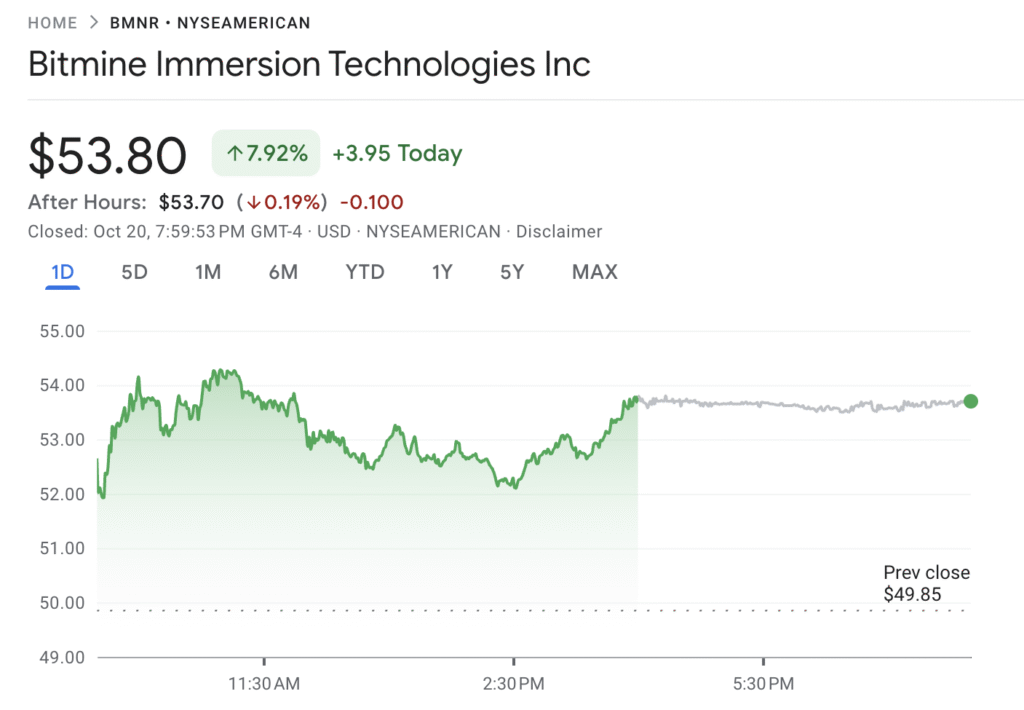What BitMine Sees in Ethereum That You Might Be Missing
In the rapidly evolving world of cryptocurrencies, Ethereum consistently attracts significant attention from both investors and tech enthusiasts. Ethereum’s unique characteristics and potential applications extend far beyond simple financial transactions. One tech company, BitMine, is leading the exploration of these capabilities, revealing the often-overlooked components of Ethereum’s ecosystem. As we dive deeper into what BitMine sees in Ethereum, you might discover some features and potentials in Ethereum that you previously missed.
1. Ethereum as a Platform for Decentralized Applications (DApps)
While many focus on Ethereum as a cryptocurrency, its true power lies in its function as a platform. Ethereum is designed to support decentralized applications (DApps), which are applications that operate on a P2P network of computers rather than a single computer. BitMine recognizes this as a transformative tool for development across various sectors including finance, real estate, healthcare, and more. The robust construction of Ethereum allows developers to create versatile and secure DApps, which can run without downtime, fraud, control, or interference from a third party.
2. Smart Contracts
Another integral feature that Ethereum provides is its smart contract capability. Smart contracts are self-executing contracts with the terms of the agreement directly written into code. BitMine sees a huge future in smart contract development due to their trustless nature and their ability to automate transactions and agreements, eliminating the need for intermediaries. This capacity not only reduces transaction costs but also increases transaction speed and transparency. From supply chain management to automated legal agreements, the potential uses are broad and significant.
3. Ethereum 2.0 and Staking
The ongoing transition to Ethereum 2.0 is another aspect that BitMine is heavily invested in. This upgrade aims to improve the scalability, security, and sustainability of Ethereum. One of the key features of Ethereum 2.0 is the shift from proof-of-work (PoW) to proof-of-stake (PoS). This not only means a more energy-efficient way of maintaining the network but also opens up opportunities for Ether holders to engage in staking. Staking involves committing your cryptocurrency holdings to support the network and validate transactions. For BitMine, this is a dual opportunity to help secure the Ethereum network and to earn rewards.
4. Tokenization and the ERC-20 Standard
Ethereum is also widely known for its role in the issuance of ERC-20 tokens, which have become the backbone for many initial coin offerings (ICOs). Tokenization is the process of converting rights to an asset into a token that can be subdivided, traded, and stored on a blockchain. This capability has huge implications in fields such as art, real estate, and more. BitMine is tapping into this space by helping companies to tokenize their assets, thereby providing liquidity and freeing up capital tied in non-traditional assets.
5. Decentralized Finance (DeFi)
Perhaps one of the most dynamic sectors within Ethereum that BitMine is keen on is Decentralized Finance, or DeFi. Ethereum’s flexible architecture has allowed DeFi to grow exponentially, providing services such as lending, insurance, and derivatives without the need for traditional financial intermediaries. This sector not only challenges conventional banking and finance structures but also brings financial services to the unbanked, thereby increasing financial inclusivity worldwide.
Conclusion
The engagement of BitMine with Ethereum shows a commitment to harnessing the technological potentials of the blockchain beyond typical uses. For investors, tech enthusiasts, and businesses, understanding these aspects of Ethereum could reveal valuable opportunities. As Ethereum continues to evolve, keeping an eye on such pioneering uses and developments can provide you with insights and advantages in a technology-driven future.



